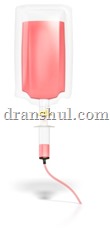1.Why young/adolescents are not allowed to donate:-
- Physiologically there is no harm in donating blood in the early age. The reason is legal.In many US states,person must be at least 17 years old to donate , or 16 years old with parental/guardian consent, There is no upper age limit for blood donation as long as you are well with no restrictions or limitations to your activities.Consent age vary from country to country,India approves at the of 18 years.
2.Why blood is collected from veins and not arteries which carry fresh and oxygenated blood:-
- Veins are easily identified as they are in the upper surface but more important is that arteries have high blood pressure and velocity so puncturing of artery causes severe bleeding which is tough to control at times. There are certain medical conditions where arterial blood is used but it is only for diagnostic and ICU management purposes.
- The main function of blood is one to act as a volume expander,in cases of trauma,surgeries,etc.or secondly to carry out the function of blood in certain medical conditions ,Hemophilia,Blood cancer,etc.
- Donated blood is rich in carbon dioxide but when transfused is automatically oxygenated in course of normal circulation and therefore serves the required purpose.
3.Why finger is pricked to check hemoglobin:-
- Hemoglobin” content is measured in blood. This is the component of the red cells which transport oxygen in the human body to all the organs and tissues. If the level is low, it is not advisable to give blood.
4.What test and physical examination are conducted on donor:-
- Weight.
- Hb estimation .
- Measurement of blood pressure .
- Checking heart beats (60 – 100 times per minute), condition of liver, lung and spleen
- Body temperature (37oC).
5.Why Hemoglobin should be at least 12.5gm/100ml:-
The role of Hemoglobin in the blood is to carry oxygen from the lungs to body tissues where oxygen is used to burn nutrients to provide energy to the organism, and collects the resultant carbon dioxide back to the lungs where it is dispensed from the organism. Hence blood with less Hb content than the prescribed (12.5gm/100ml) does not help the patient much in carrying oxygen to cells.
6. I was earlier asked not to donate,Should I try again :-
- Yes, you can, most deferrals are temporary–not permanent.
7. Blood donation is very painful:-
- A myth,it pinches like a prick of an injection needle. The feeling of saving someone life,gives immense pleasure and blood donation is more valuable then 1000 $ donated.
8.Blood donation takes much time:-
- A myth,It should take up not more than 20 minutes of time including time for rest and taking refreshment.
9.At least a liter of blood is taken for donation:-
- A myth,Blood banks take only 350 ml of blood .
10.Blood donation means wastage of one working day:-
- A myth ,one can go back to your normal work after 30 minutes.
11.One becomes anemic after blood donation:-
- A myth, The body begins replenishing lost fluid within a day and Red Blood Cell (RBC) in 21 days.
12. Once donated ,blood donation is deferred for 1 year at least:-
- A healthy human can donate once in 90 days ,4 times a year.
13. Why there is some transparent liquid in blood donation bag:-
- It is known as CPDA (Citrate, Phosphate, Dextrose, Adenine) solution,used as anti-coagulant and prevents the blood from clotting. It also helps to preserve the blood cells.
14.What test are carried out on donated blood:-
- HIV (AIDS) test.
- Jaundice (Hepatitis B & C).
- Venereal disease (STD).
- Malaria .
- Blood Group .
15.Can I get infected from AIDS,STD’s,etc. by donating blood:-
- A myth,only disposable or sterile equipment are used so there are least chances of being infected.
16.Why blood is preserved only for 35-42 days,even though RBC has a life span of 120 days:-
- Though Donated blood has RBC from 1 to 120 days’ life span,so all cells with such different life span cannot be preserved for 120 days hence in order to get a considerable number of living cells present in the blood for transfusion, 35 days shelf life has been found to be optimum with CPDA and CPDA1 solution on the basis of various experiments. Moreover, cells which can remain alive for 120 days within the human body cannot survive for such period in an artificial environment.
17.Why human blood is used,when media reports suggest availability of artificial blood:-
- The research is still in a preliminary stage. The term ‘artificial blood’ is a misnomer as blood has various functions. The so called ‘artificial’ blood can only carry oxygen to the cells and bring back carbon dioxide in a limited way but cannot perform any other function of blood at all. Further, this so called substitute is quite costly for developing countries like India
18. Why blood bank charge for the blood:-
- Blood Banks do not charge for the blood itself. However, donated blood must undergo many tests to assure that it is safe to be transfused. Technically, they are charging for the testing that they perform on the donated blood.
19.Asthmatics and Diabetics are not allowed to donate:-
- If a person breaths freely with no acute attack of Asthma ,he can donate blood safely,similarly a person with tight Blood Sugar levels can safely donate blood.
20.Blood donation from Diabetics can cause Diabetes:-
- A myth,diabetes is not a infection but a systemic illness so recipient can not become diabetic.
21.High or Low Blood Pressure disease disqualify from Blood Transfusion:-
- A myth,If one sustains proper blood pressure even with medications ,he/she can safely donate blood.Normal Blood pressure according to latest WHO guidelines varies and depends upon race,ethnicity,group,etc.
It will be a pleasure to answer any question related to this post ,please send queries to admin@dranshul.com
{ 0 comments… add one now }